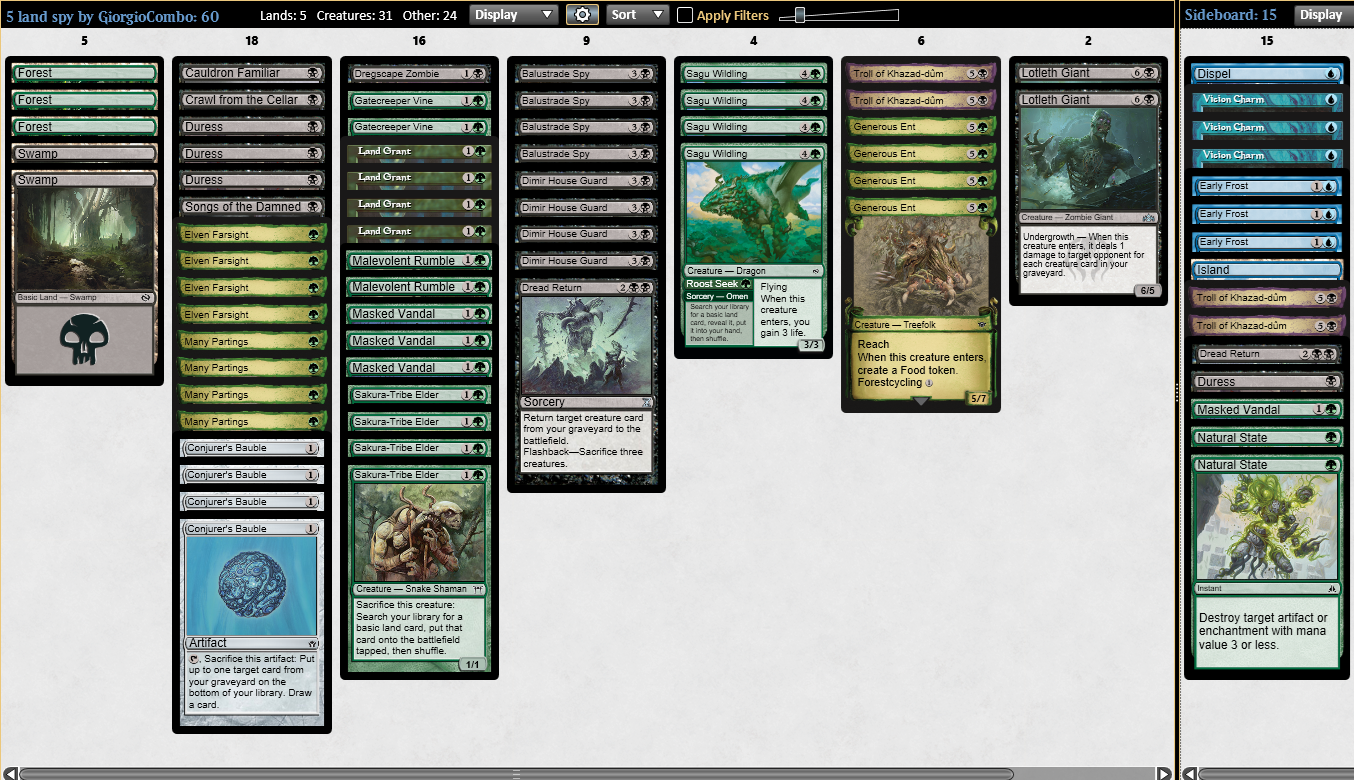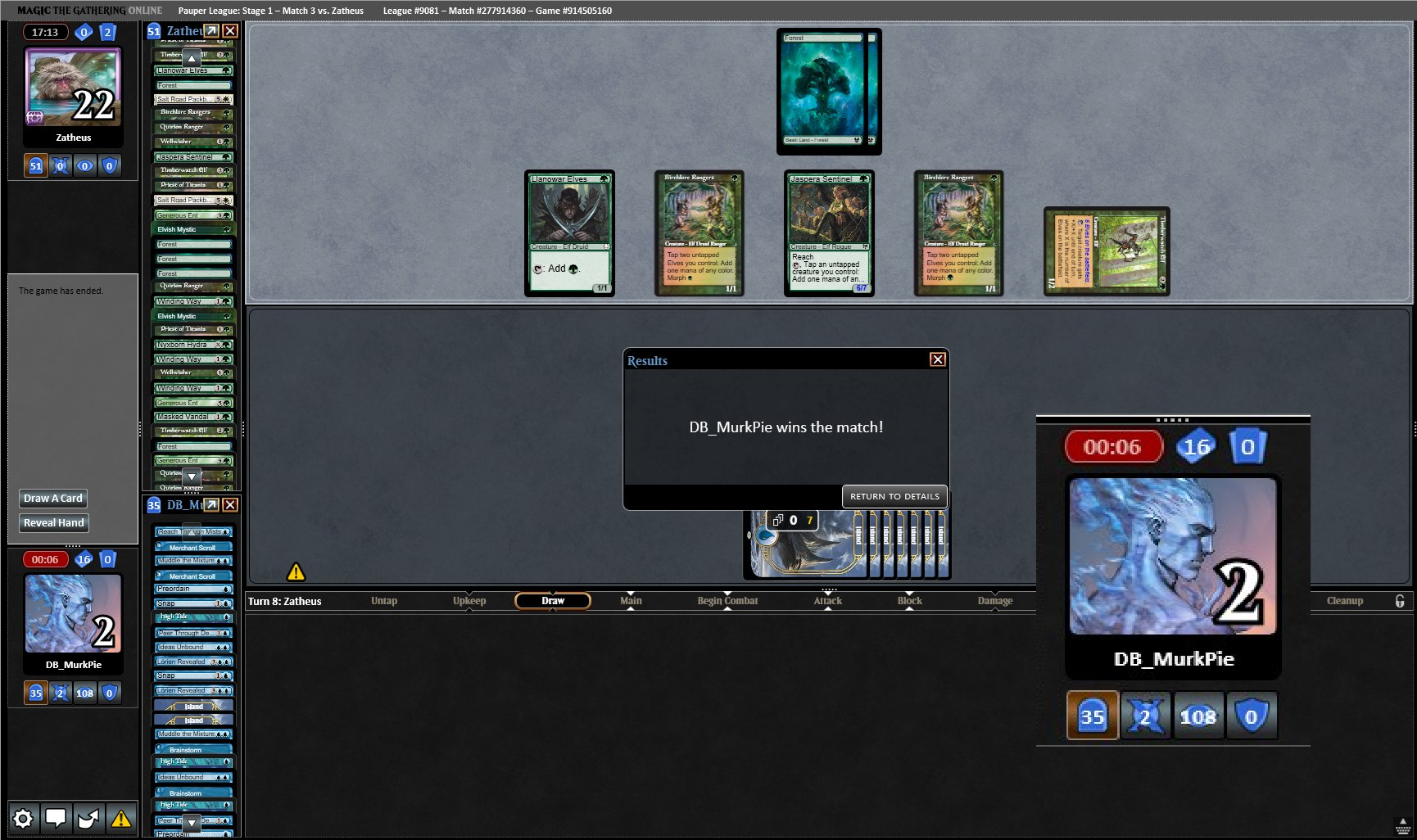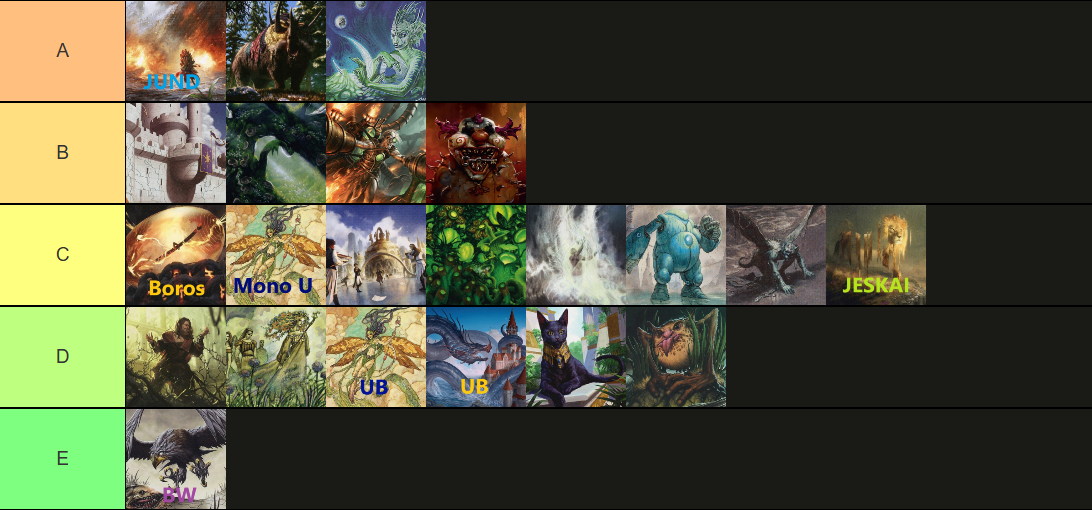Loading...
Products
Magic: The Gathering Line
Pauper is becoming the "next big thing." In Italy, Sunday events regularly sell out with over 120 players each week. Paupergeddon—the format’s own Grand Prix—keeps growing, with the last edition reaching 750 participants. In just a few weeks, even Magic Online will begin hosting premier events like Showcase Challenges, giving players a chance to qualify for the Pro Tour and MOCS through Pauper.
Approaching Pauper for the first time —especially coming from Modern or Standard— is a unique experience. Some incredibly powerful enablers like Brainstorm, Dark Ritual, and the artifact lands are legal, but there’s a general lack of strong finishers. Games often turn into midrange battles, where players accumulate resources until someone resolves a decisive threat.
Aggro is a popular approach, but all the aggro decks tend to be inconsistent. Midrange and "control" (if we can even call it that—most decks lack true wrath effects) are more stable, but painfully slow. I've had games where I won with Spellstutter Sprite beatdown playing UB Faeries. Combo decks exist, but they’re usually fragile and easy to disrupt. Still, the format feels balanced, with every strategy offering a viable path to victory.
1) Know Your Deck—And Your Opponent’s
This sounds obvious, but it’s especially critical in Pauper. Every archetype —except maybe Jund, which is more of a pile of good cards— has glaring weaknesses. If you're playing a red deck, you can be sure green opponents will have Weather the Storm—but they might also run Pulse of Murasa or even Tamiyo’s Safekeeping.
Since there’s no card like The One Ring or Sheoldred that can just win the game by itself, sequencing properly and respecting your opponent’s potential plays is everything. This also affects deckbuilding: in an open format like this, knowing the metagame and adjusting your list accordingly is what separates great players from average ones.
Take GiorgioCombo, for example—a smart and dedicated combo player. His decklists often include clever, targeted tech cards that punish the metagame in very specific ways.

2) Mana Efficiency Wins Games
I learned this watching the Top 8 of Paupergeddon Rome 2023. Tommaso Loss piloted a BG removal pile with such precise sequencing that he maximized his mana every single turn. It turned his grindy midrange deck into a machine.
Most Pauper decks run only 1-, 2-, and 3-mana spells (plus tap lands), and they're packed with card advantage. Planning several turns ahead and sticking to strict rules for mana usage pays off.
This also affects deck construction. For instance, while building High Tide, I realized I needed a card draw spell before Turn 4, when I usually go off. I was torn between Pieces of the Puzzle and Behold the Multiverse. Here’s what the ideal curve looked like:
Turn 1: Brainstorm / Lórien Revealed / Preordain
Turn 2: Merchant Scroll
Turn 3: ???
I was missing a strong Turn 3 play. So I chose Pieces of the Puzzle for the main deck because it fit the curve better, and relegated Behold to the sideboard for slower post-board games filled with Duress and Pyroblast.
3) Time Is a Resource—Especially on MTGO
Pauper is slow. In midrange mirrors, Turn 5-6 often still feels like the early game. You’re developing mana, casting early threats, and building up a hand. Games are won through micro-advantages—like waiting to cast Fanatical Offering until you have an Ichor Wellspring to sacrifice, or holding your Expedition Map until you can fetch Krark-Clan Shaman at the perfect moment.
Because games are grindy, it’s crucial to always be aware of the clock. If you’re playing Flicker Tron in paper—a notoriously slow deck—and there are only 15 minutes left in the round, it might be smart to side in a Fireball-style finisher. Even if it’s weak in your opening hand, it may be your only way to secure a win before time runs out.
On MTGO, time pressure is even harsher. You might have your opponent at zero cards in hand while you’re holding seven—or have Capsized their entire board—and still lose on time. Many Pauper combos involve huge click-intensive loops, and MTGO opponents rarely scoop just because you've demonstrated a win condition. That means you either need to streamline your combo (add an immediate kill condition) or choose a different deck.
This has always been true. Familiars and Altar Tron were once top-tier, but nearly unplayable online because executing their loops was so impractical.
One final note: preparing for paper events and MTGO events are two very different things. The MTGO metagame leans more aggressive—partly because aggro is faster to play, and many MTGO grinders are multi-queuing. Paper metagames, on the other hand, trend toward midrange decks, as seen in recent Paupergeddon data, where Jund Midrange was the most played deck.


Here’s how I’d rank the Pauper decks speaking of strength, not numbers. Anything not on this list is either not very strong or hasn’t shown enough relevant data to justify a mention.
The best decks in the format right now are:

Modern Horizons 3 gave Jund a huge boost, and players like Paolo Donfrancesco have spent countless hours fine-tuning it, turning it into one of the most formidable decks in the format.
Jund dominates aggro thanks to its strong removal suite and evasive or reach-based threats.
That’s exactly why I’ve ranked most non-burn aggro decks lower—Krark-Clan Shaman plus Toxin Analysis is a brutal combo that wipes the board, and the Deadly Dispute engine gives the deck endless fuel and card advantage.
Playing Jund rewards mastery of the three key Pauper fundamentals I mentioned earlier. But even if you're just starting out, picking up Jund can be a great way to learn the format—sometimes you'll win games simply because your cards are better than your opponent's.

A Turn Two Writhing Chrysalis feels like you're living in gangsta’s paradise. This deck is downright nasty when it comes to busted turns. Nearly every threat is a nightmare for midrange and combo decks—big bodies, trample, haste (or both, in the case of Nyxborn Hydra)—and the deck is excellent at flooding the board with them.
The graveyard is an active resource thanks to Bannerhide Krushok, making Malevolent Rumble the perfect cantrip. It often cashes in leftover mana from enchanted Forests and Arbor Elf, giving you even more efficient plays.
While the deck may seem straightforward at first glance, mastering it takes real skill. Sequencing, resource use, and knowing when to go all-in are key. If you’re new to Pauper and want to learn the format through development patterns—or if you simply love jamming huge monsters—this is probably the best deck for you.

I've spent a lot of time tuning and testing High Tide. After 100+ matches, I still feel like I’ve only scratched the surface. But one thing is clear: this deck’s raw power is unmatched in the current Pauper meta. High Tide is just waiting for the perfect environment to dominate.
Running zero creatures makes it incredibly hard to interact with in Game 1, turning early matches into pure races—ones High Tide often wins, since it doesn’t care about what the opponent is doing. Post-board games are a different story: nearly everyone brings in Pyroblast, Duress, or just tries to go faster.
Still, the deck is super fun and extremely challenging. You constantly have to maximize every resource and every spell to avoid fizzling mid-combo. I’m not sure I’d recommend this deck casually, but I absolutely love the endless possibilities and the deckbuilding depth it offers.
Oh—and if you’re planning to run this on MTGO, don’t expect any mercy.
But Pauper is full of cool and unique decks—many of which could win a tournament if perfectly tuned and piloted. I’m genuinely excited to see what will rise to the top in this post-ban metagame, both online and in paper. Whether my current reads on the format hold true after the upcoming Showcase Challenge on MTGO… well, only time will tell!